Russians at War: The Myth of Putin's War
This has all happened before and it is happening again
“Russians at War” is a “documentary” by Anastasia Trofimova, a Russian-Canadian filmmaker, who embedded with a Russian unit fighting in Ukraine for seven months. She set out humanize the soldiers carrying out Russia’s genocidal invasion believing that Western reporting dehumanized them by only ever portraying them as war criminals.
Anastasia Trofimova built her career making documentaries for RT Documentary, a channel part of RT (formerly Russia Today), the Russian state-controlled international “news” network. Of the twelve films listed on the director’s website (“Russians at War” does not appear as of the writing of this article), eleven of them were published by RT Documentary.
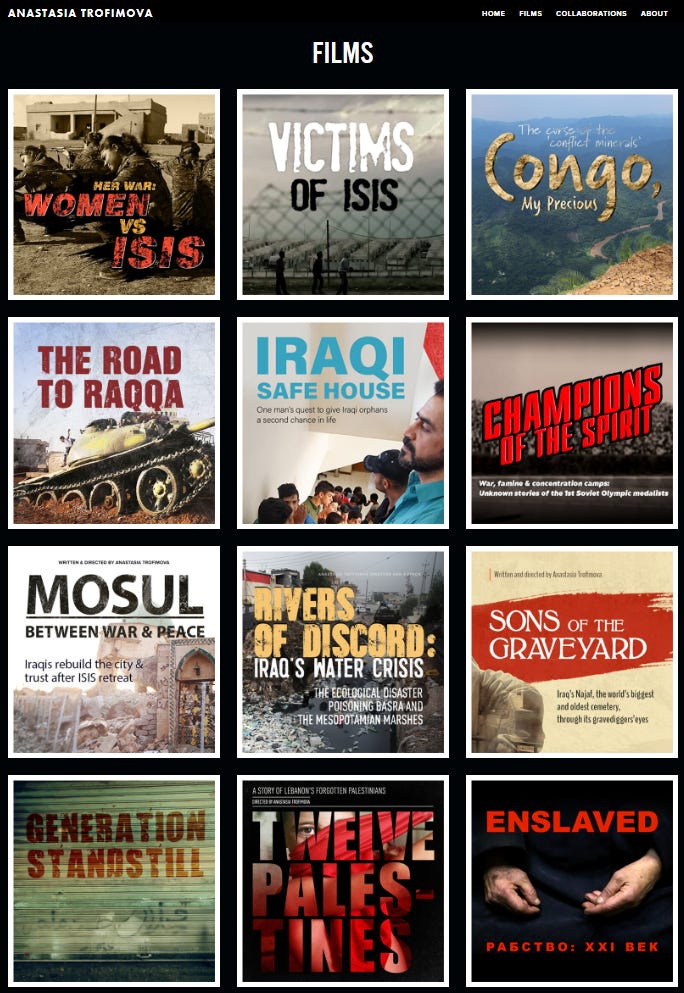
Given this career background, Trofimova makes extremely dubious claims about her access to the front line, insisting that she had no permission from either side to make this documentary. She states that the Russian government would have never allowed her to film as state funded media at the front are kept on a short leash and she had lost her press card due to employment with the CBC in 2022. She also asserts that she never would have been allowed to film by the Ukrainian government due to her history working for RT and mocks the suggestion that she even attempt to ask by saying “Did they expect I would phone the embassy in Kyiv and ask if it was okay?”
Trofimova proceeded to illegally enter occupied Ukrainian territory and convinced a group of soldiers that she should film them; “I said that I was making a documentary, that now in our country the main event in modern history is this war, and you are its main participants.” Their platoon commander accepted the proposal by saying that it reminded him of the Great Patriotic War, a comparison that she agreed with. She continues to recount how she worked her way up the chain of command and recieved the assent of the brigade commander who agreed with the comparisons to the Great Patriotic War.
Through those seven months, Trofimova claims she witnessed no war crimes and the soldiers she is filming also reject the idea that the Russians are commiting war crimes at all, claiming those are “impossible accusations.” This is a particularly ironic statement given that the brigade commander whose approval she recieved unintentionally admits to firing on noncombatants by ordering that she be given a military uniform so “that my own people don’t accidentally shoot me.”1
We are also supposed to believe that a former documentary filmmaker for RT did not have the approval of the Russian state, despite multiple levels of unit leadership, including a brigade commander, being aware that a documentary filmmaker was embedded with the Russian military near the frontline in Ukraine. We are supposed to believe that she filmed for the better part of seven months and no one ever bothered to report her to state authorities.
The latter is particularly unbelievable given that she made several visits to an administrative office in the so-called Luhansk People’s Republic where she requested to use their internet connection specifically because she is filming a movie in the area and they allowed her to leave a computer with storage devices in their office. The so-called Luhansk People’s Republic is a region rife with secret police and informers where any form of dissent is punished by incarceration and torture.2
I understand that the Russian military and occupational authorities are notorious for communication and coordination issues but it defies the imagination that she was able to do all of this without ever being noticed while interacting with numerous figures who would have easily been able to report her to relevant authorities.
You might be willing to dismiss this as propaganda for unwitting fools. Unfortunately, propaganda for unwitting fools has a long history of being made and succeeding.3 Trofimova’s career, her choices as a filmmaker, and her comments about her film and the context it exists within point to a deliberate decision to forge a piece of propaganda that will wash the hands of her fellow Russians.
This is worse than it sounds.
(Ethnic) Russians at War
To begin, the title of the movie in Russian is "Русские на войне." For those who are unfamiliar with the Russian language, there are two words for “Russian.” Rossiyanin refers to a “citizen of Russia” while Russkiye refers to an ethnic Russian.4 Trofimova has chosen to use the latter.
This may just be a grammatical choice and little should be read into it but words do have meanings and in this context it is a very unpleasant one.
The Russian Federation is not entirely composed of ethnic Russians and non-ethnic Russians are often overrepresented in military service (both contract and conscript) due to a lack of economic opportunities outside of metropolitan European Russia. This is reflected in demographic analysis of Russian casualties in Ukraine. The lowest fatality rates are amongst soldiers from Moscow and St. Petersburg while the highest are from economically disadvantaged regions of Siberia and the Russian Far East. Of the top 15 regions by war deaths per 10,000 working age males, 12 of the regions are in Siberia, the Russian North, or the Russian Far East.
While ethnic Russians still make up over 70% of the Russian military’s casualties they comprise over 80% of the population. In contrast, these ethnic minorities make up fractions of a percent of the Russian population yet are overrepresented in Russian casualties. The racial and imperial dynamic of Russia sending many of its minority subjects to die in Ukraine cannot be ignored given both the framing of this film as (ethnic) Russians at War and Russkiy Mir as a political concept.
Given the circumstances that many of these men are facing, it can accurately be described as a poverty draft. This is something that Trofimova does actually capture in her film as some of her subjects admit they are fighting for money but the financial motivation is not an aspect she chooses to emphasize, instead opting to depict how their motivations change. Speaking more generally, the Russian Federation has largely solved the issue of mobilization by offering large signing bonuses and significant increases in pay for contract soldiers.
Conscription continues to exist within Russia but conscripts are prohibited from being deployed outside of Russia. This requires the Russian Federation to operate a parallel recruiting structure with different incentives for those recruits to pursue the invasion of Ukraine.5 Contract service within the Russian military typically feature monthly salaries approximately 2.5 times greater than the average salary in Russia with large signing bonuses. You may feel some sympathy for the men whose only opportunity for social mobility is military service but it should not be controversial to believe that your sympathy should terminate as soon as they decide killing others is an acceptable trade for that social mobility.
The Great Patriotic War of Our Times
Trofimova recalls being told by a platoon commander (and later the brigade commander) that the film she set out to make reminded him of the journalists who accompanied the Red Army during their advance into Germany during WWII. This may seem to be an innocent comment referencing a historical event but things are seldom that simple.
The Great Patriotic War is the term that the Soviets and later Russians used to describe their contributions to Allied victory in WWII.6 Within the modern Russian narrative this is largely framed as the Soviets (Russians) defeating the Nazis where the contributions of the non-ethnic Russian members of the Soviet Union are left out. This narrative also exists outside of Russia where Western understandings of the Eastern Front often uncritically accept this framing. The non-Soviet Eastern Europeans (sans Poland) who resisted Nazi occupation are subsumed into the narrative of the Soviet partisan while their existence as distinct peoples is associated with collaborator formations within the Nazi war machine.7
Worthy of note is that “denazifying Ukraine” is a casus belli of the Russian Federation in their invasion of Ukraine. The historic Great Patriotic War framing can be superimposed onto the current Russian invasion where now independent former members of the Warsaw Pact providing military and humanitarian aid to Ukraine are Nazi collaborators and the Russians are right to see all of them as enemies.
By understanding the Russian invasion of Ukraine as their generation’s Great Patriotic War, Trofimova has accepted the Russian state’s line on this war in spite of how she claims to understand that “denazifying Ukraine” is a farce.
The framing of the Russian invasion of Ukraine as a Great Patriotic War is obscene. It places the Russians at center stage and erases the contributions of non-Russian peoples such as Volodymyr Zelenskyy’s grandfather who fought in the Red Army during WWII. It compares the most devastating war in human history in which most of the planet united to crush genocidal dictatorships to a campaign of genocidal irredentism. It would equate the Soviet soldiers who smashed the Nazi war machine at the Battle of Berlin to economically anxious young men storming Bakhmut alongside the mercenaries of Wagner Group and their penal battalions.
The Clean Wehrmacht and Putin’s War
The “Clean Wehrmacht” is a now thoroughly debunked myth that the SS and various Nazi Party structures were responsible for the overwhelming majority of atrocities and war crimes during WWII while the Wehrmacht as a German rather than Nazi institution largely fought a “clean” war. This myth has continued to endure despite being subject to numerous pieces of scholarship debunking it on a factual basis.8 This is largely due to the fact that the myth entered the zeitgeist of postwar Europe quite quickly and has proven quite difficult to dislodge as people tend to be reluctant to reevaluate their prior opinions and worldviews.
For those who are familiar with much of the literature that has debunked the “Clean Wehrmacht” myth it often features primary sources such as letters or diaries from German soldiers. They discuss their misery, the misery of their enemy, how they are inflicting misery on their enemy, and ultimately why they fight. These depictions will cause you to empathize with their suffering and the frank discussion of their motivations (at least how they speak of them) humanizes them by making them not all that different from any one of us.
That is also what makes it so horrifying. These people have free will and agency yet they committed unspeakable atrocities, many of them even describe their actions as unspeakable in their letters home to their families9, and ultimately found a way to justify it to put their minds at ease.
Trofimova’s depiction intends to have the viewer empathize with the Russian soldier but it does not humanize them. Yes, most people would instinctively empathize with someone fighting in a war they don’t fully understand and seeing their comrades return as casualties but you cannot humanize someone while simultaneously denying them fundamentally human aspect of free will and agency. Her insistence on depicting of her fellow Russians as confused and miserable with minimal agency obfuscates the truth within the film itself that they were largely motivated by money.
All of these “ordinary Russians” made the conscious decision to join the Russian military and invade Ukraine. They may be motivated by money or nationalism but ultimately they have free will and have willingly decided that this is what they are.
In possibly the most obscene framing possible, Trofimova states that her intent to humanize the Russian soldier is out of a belief that “if you choose a side, you are for war” and compares the dehumanization of Russian soldiers to the Radio of a Thousand Hills which played a significant role in inciting the Rwandan Genocide.
This is disgusting because the Russians are the ones currently carrying out a genocide. The Russians invaded Ukraine in 2022 with 45,000 body bags and most of us assumed it was to hide their own casualties rather than a thousand Katyn Massacres of prominent Ukrainian activists, politicians, and intelligentsia. Every day the Russians shell communities along the border with Ukraine, they fire ballistic missiles and suicide drones at civilian infrastructure and they murder Ukrainian civilians in Kherson with drones. Western journalists portray Russian soldiers as war criminals because war crimes are found wherever the Russians go.
Despite arguing that dehumanizing a side is akin to inciting a genocide, she has chosen not to depict Ukrainians at all. The Russians are continuously made out to be the victim. They are shown to be miserable and poorly-equipped and their attitudes of indifference turn to vengeance after they are sent on an assault near Bakhmut and take heavy casualties in an attempt to illustrate how war changes people.10 The Russian director goes so far as to describe the war that was initiated by Russia as “a huge tragedy for our region.” As far as Trofimova is concerned, the Russian perspective of the war is the only perspective of the war.
In contrast, Ukrainians never appear in the film. They only appear offscreen as “the enemy” referred to with slurs and the source of suffering the Russian soldiers are enduring with the not so subtle implication that if the Ukrainians just gave up, their nightmare would end. This all occurs as the Russians deny any of their own could have ever committed war crimes all while they stand on occupied land and their countrymen rain shells upon it.
This Has All Happened Before and it is Happening Again
We are watching the narrative of “Putin’s War” being forged as we speak. The idea that the Russian people don’t want this war. The idea that they’re being manipulated by Putin’s ambitions. The idea that Vladimir Putin deserves the entirety of the blame for this war and the conduct of the military of the Russian Federation. The pan-slavic “Brothers’ War” narrative in which the Ukrainian and Russian people have more in common than not and therefore the fighting is pointless.
Russians at War is doing all of these things.
The “Putin’s War” narrative would have us believe that every executed POW and civilian was executed by Putin himself. That the missiles and drones which strike Ukrainian civilian infrastructure on a daily basis were fired by Vladimir Putin. It feeds into an existing narrative of the Russian people being powerless to oppose Putin which absolves them of guilt as they sit back and continue to enjoy life while their countrymen enlist in the military to kill Ukrainians.
Many westerners have already accepted this narrative and this film will prove to reinforce that prior understanding. Some of the film’s strongest defenders are perpetuating the “Putin’s War” narrative while also incorporating ridiculous comparisons of this film to All Quiet on the Western Front or the idea that the young men enlisting in the Russian army don’t yet have fully developed brains.
The director as well as many of her defenders repeatedly claim that the Russian state would have never let her make this film and it is therefore an act of bravery. This is in spite of the fact that she was filming brazenly for seven months with a brigade commander and local occupation administration aware of her actions. This is in spite of the fact that she was employed by RT for seven years, built her career making films for them, and RT is currently reporting on the “censorship” of her film.11 These commentators also repeatedly refuse to acknowledge the director’s history with RT, instead focusing on the content of the film without that vital context.
This is also in light of recent announcements from both the American and Canadian governments regarding Russian influence operations active in both countries with RT acting as an arm of Russian intelligence services.
The title of the film itself, (ethnic) Russians at War betrays a particular framing. The director has entirely extirpated the non-ethnic Russians doing a disproportionate amount of the fighting and dying in favor of ethnic Russians who the likely white dominated audiences will find easier to empathize with.12 An undiscussed aspect of the “Putin’s War” narrative and how it revolves around the implication that it is (white) ethnic Russians fighting is that it may serve as the basis for a “stab-in-the-back” myth. The metropolitan European Russians could quite easily shift blame to the colonial subjects on the periphery and portray themselves as failed by their countrymen.
You are free to draw your own conclusions but there are striking similarities between the “Putin’s War” narrative and the “Clean Wehrmacht” both from how they exist in the zeitgeist and how they are being formed and peddled by unwitting fools who aren’t even aware of what they’re doing.
This is a war crime.
A charitable interpretation of Trofimova’s claim that no one in the so-called Luhansk People’s Republic examined her belongings is that she was allowed this leeway due to her Russian passport. Forced passportization is one of many occupation policies in Russian occupied Ukraine that intends to turn Ukrainians into Russians by denying them social services or healthcare unless they accept Russian citizenship.
As of the writing of this essay, there are a number of prominent commentators and organizations involved in hosting the film that are defending it as none of these things. They are wrong but deconstructing each of their individual arguments is beyond the scope of this essay.
Tangentially relevant is the idea of Russkiy Mir or “The Russian World” which is a prominent concept in Russian statecraft and propaganda. At a glance it is a fairly standard “sphere of influence” term but the use of the word for ethnic Russians adds an ethnonationalist flavor.
Other than the blatant imperialism, a speculated motivation for the formal annexation of Donetsk, Kherson, Luhansk and Zaporizhzhia oblasts was to allow the deployment of conscripts to those regions. So far this has not happened.
There is a sleight of hand in that it allows the Soviets to ignore the Molotov-Ribbentrop Pact and their invasion of Poland as it fell to Nazi Germany.
This is in stark contrast to many Western European countries who have made their resistance to the Nazis into central parts of their modern identity and state history and the existence of collaborator formations or governments are not a stain on their national histories.
I will not be covering the Clean Wehrmacht or its endurance in extensive depth, it is beyond the scope of this essay. For further reading direct yourself toward Nicholas Stargardt’s “The German War: A Nation Under Arms, 1939-1945.” Sönke Neitzel and Harald Welzer’s “Soldaten: On Fighting, Killing, and Dying: The Secret World War II Transcripts of German POWs.” and Ronald Smelser and Edward J. Davies’ “The Myth of the Eastern Front: The Nazi-Soviet War in American Popular Culture.”
Some of them do not describe atrocities at all but the absence of evidence should not be used as evidence of absence.
Her insistence that she saw no war crimes and only “ordinary Russians” further defies the imagination given that Wagner Group and its penal battalions were heavily involved in the capture of the city yet she apparently never encountered them.
I understand that Russia is not above cynical weaponization of current events but there are enough coincidences involved in nearly every aspect of this film that accepting her story defies imagination.
The film premiered at the Venice International Film Festival and is set to premiere at the Toronto International Film Festival. Much of the commentary around this movie has revolved around the Canadian premiere as the film has recieved funding from Canadian sponsors and public broadcasters.

![Sam [REDACTED]'s avatar](https://substackcdn.com/image/fetch/$s_!1Fx0!,w_36,h_36,c_fill,f_auto,q_auto:good,fl_progressive:steep/https%3A%2F%2Fsubstack-post-media.s3.amazonaws.com%2Fpublic%2Fimages%2F9f12d66a-aa73-4a82-90c0-44a6dffc0dc5_2064x1548.jpeg)
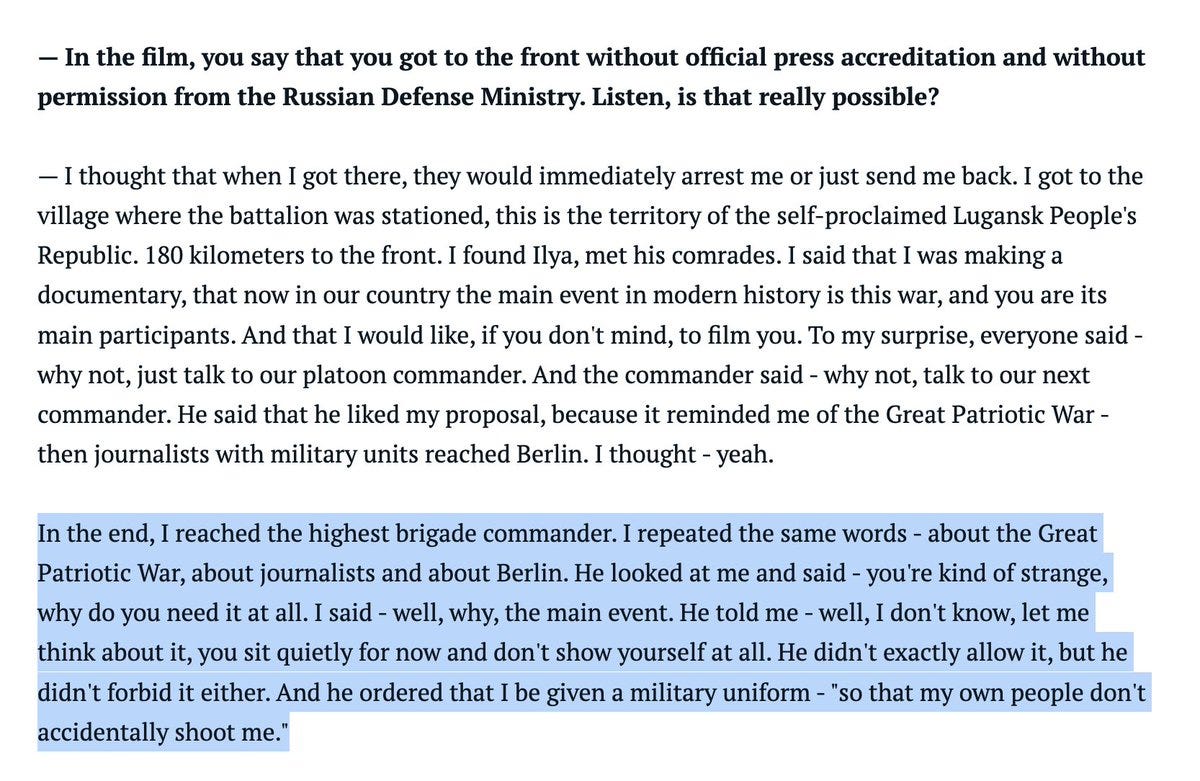

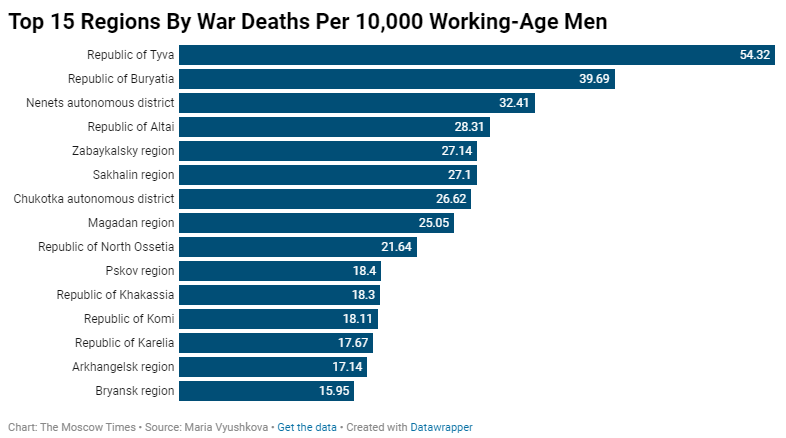
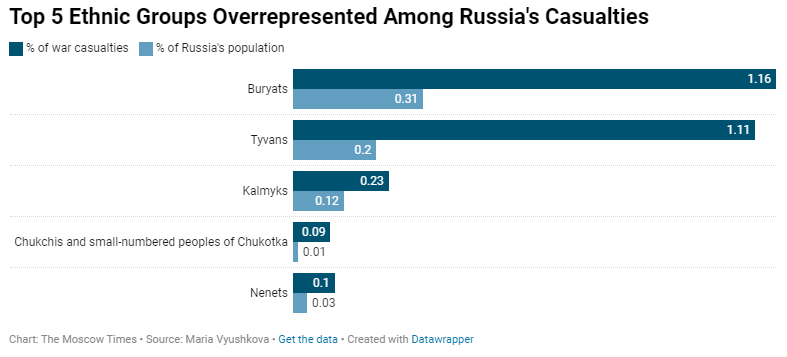
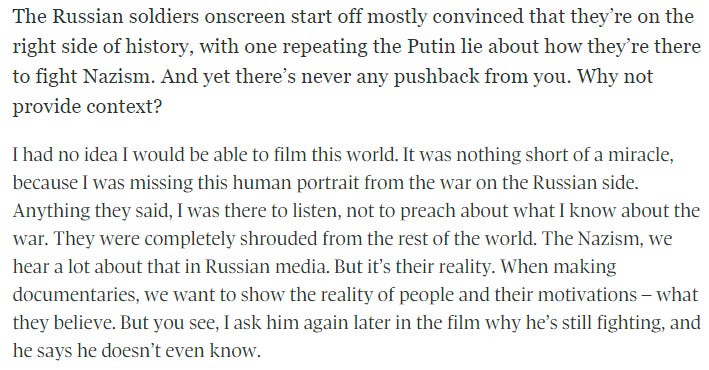
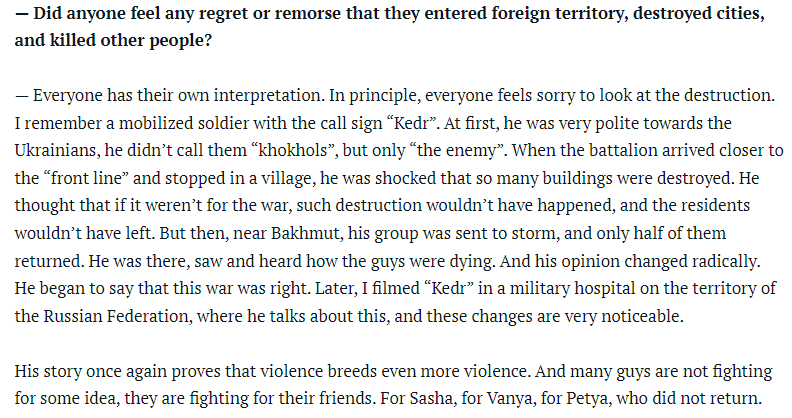
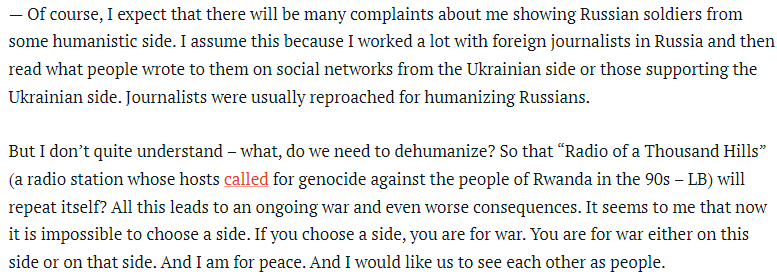
…it’s NOT “documentary” - it’s FUCKING PROPAGANDA !